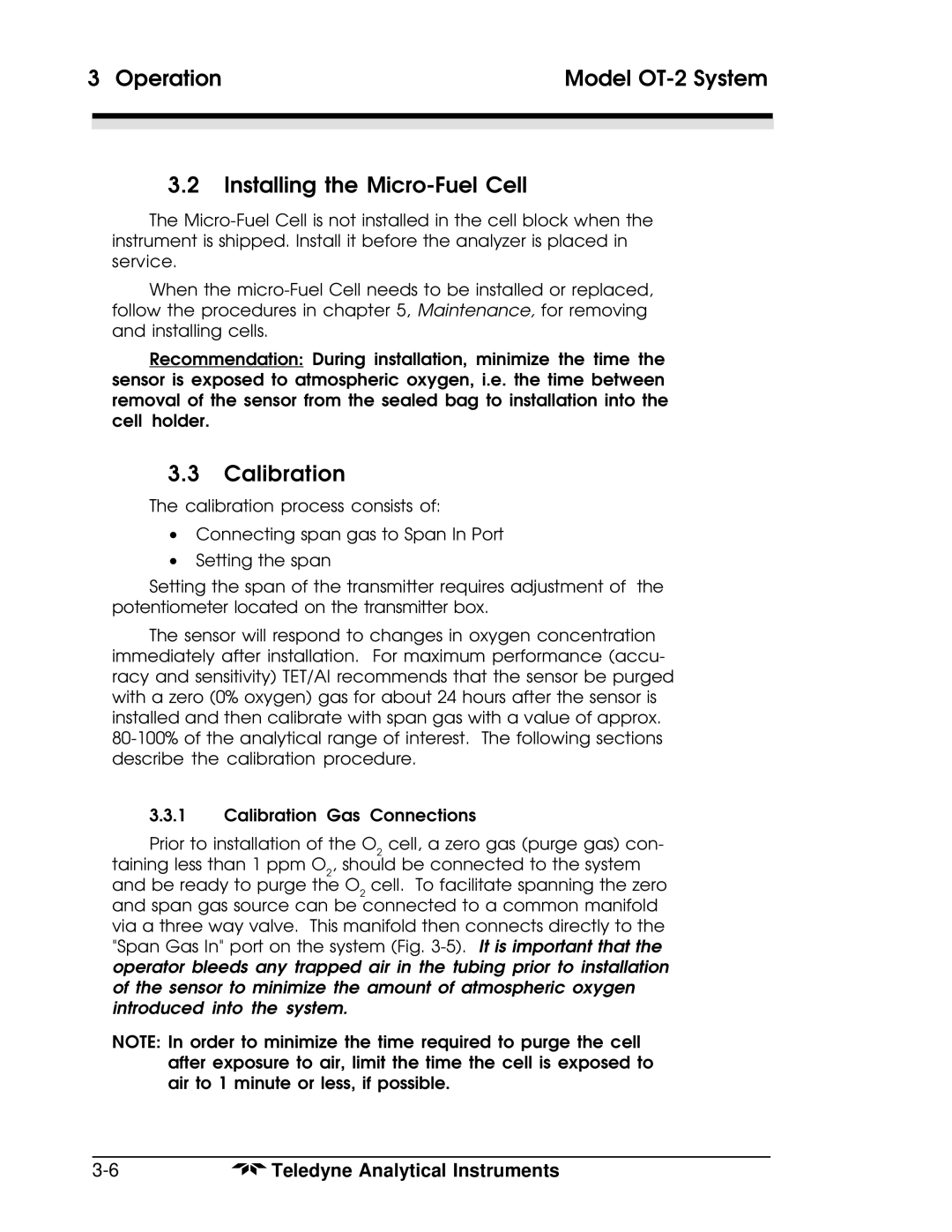3 Operation | Model | |
|
|
|
|
|
|
|
|
|
3.2Installing the Micro-Fuel Cell
The
When the
Recommendation: During installation, minimize the time the sensor is exposed to atmospheric oxygen, i.e. the time between removal of the sensor from the sealed bag to installation into the cell holder.
3.3Calibration
The calibration process consists of:
•Connecting span gas to Span In Port
•Setting the span
Setting the span of the transmitter requires adjustment of the potentiometer located on the transmitter box.
The sensor will respond to changes in oxygen concentration immediately after installation. For maximum performance (accu- racy and sensitivity) TET/AI recommends that the sensor be purged with a zero (0% oxygen) gas for about 24 hours after the sensor is installed and then calibrate with span gas with a value of approx.
3.3.1Calibration Gas Connections
Prior to installation of the O2 cell, a zero gas (purge gas) con- taining less than 1 ppm O2, should be connected to the system and be ready to purge the O2 cell. To facilitate spanning the zero and span gas source can be connected to a common manifold via a three way valve. This manifold then connects directly to the "Span Gas In" port on the system (Fig.
NOTE: In order to minimize the time required to purge the cell after exposure to air, limit the time the cell is exposed to air to 1 minute or less, if possible.
Teledyne Analytical Instruments |
